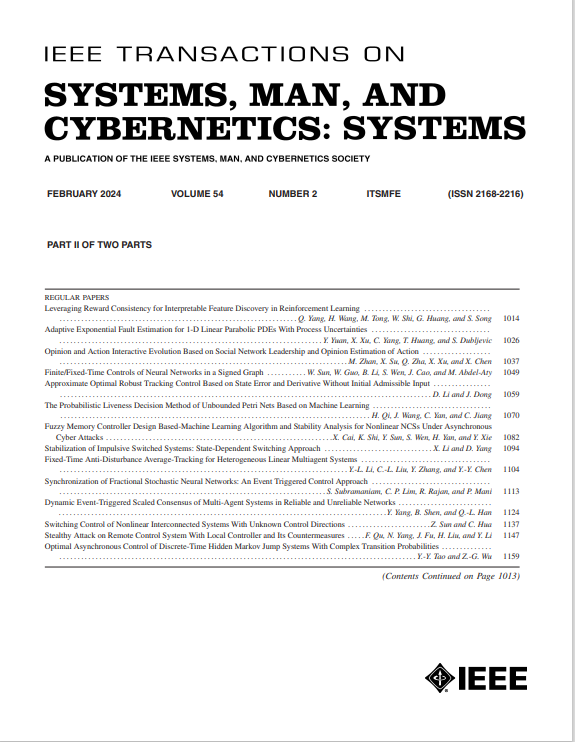Arithmetic-Free Personalized Compressed Sensing Based On Deep Neural Networks for Wireless Transmission From Brain–Computer Interfaces
IF 8.7
1区 计算机科学
Q1 AUTOMATION & CONTROL SYSTEMS
IEEE Transactions on Systems Man Cybernetics-Systems
Pub Date : 2025-07-22
DOI:10.1109/TSMC.2025.3584478
引用次数: 0
Abstract
State-of-the-art brain–computer interfaces can carry out neural recording from hundreds of channels with high resolution. Such massive data makes it easy to study the brain better than ever before, but on the flip side, it leads to increased chip size, power consumption, heat dissipation and risk for patient safety. As such, compression of the data prior to transmission from the implant could be key to improving reliability and usability of such microsystems. In recent years, starting from sparsifying transforms all the way to compressive autoencoders (AEs), this compression has been offered by substantial arithmetic on the implant side, which in turn incurs its own inevitable costs. In this work, we analyze spike waveforms to prioritize subintervals by their importance. Thereupon, we design a temporal undersampling pattern matching the importance of each subinterval for compressive sensing of spikes. Following such sensing, we reconstruct spikes using a deep neural network (DNN) trained to capture spike representation from the undersampled measurements, with possible adaptation to individual subjects. This approach offers what we believe is the first spike compression-reconstruction framework that imposes no arithmetic on the compressing side, yet on the restoration side, performs at least on par with most on-chip arithmetic-heavy techniques. For instance, given a spike length of基于深度神经网络的无算法个性化压缩感知脑机接口无线传输
最先进的脑机接口可以从数百个通道进行高分辨率的神经记录。如此庞大的数据使得研究大脑比以往任何时候都更容易,但另一方面,它会导致芯片尺寸、功耗、散热和患者安全风险的增加。因此,在从植入物传输之前对数据进行压缩可能是提高此类微系统可靠性和可用性的关键。近年来,从稀疏化变换一直到压缩自编码器(AEs),这种压缩都是通过植入端大量的算法来提供的,这反过来又产生了自己不可避免的成本。在这项工作中,我们分析了尖峰波形,根据它们的重要性对子间隔进行优先排序。因此,我们设计了一个匹配每个子区间重要性的时间欠采样模式,用于峰值压缩感知。在这种感知之后,我们使用深度神经网络(DNN)重建尖峰,该网络经过训练,可以从欠采样测量中捕获尖峰表示,并可能适应个体受试者。这种方法提供了我们认为是第一个尖峰压缩重建框架,它在压缩端不强加任何算术,但在恢复端,至少与大多数片上算术繁重的技术相当。例如,给定8倍压缩时的峰值长度为$N=64$,著名的symlett -4方法产生的平均信噪比和失真比(SNDR)为7.14 dB,每个峰值的总压缩算法成本为$16N$和乘积,而对于所提出的方法,该数字为8.38 dB。
本文章由计算机程序翻译,如有差异,请以英文原文为准。
求助全文
约1分钟内获得全文
求助全文
来源期刊

IEEE Transactions on Systems Man Cybernetics-Systems
AUTOMATION & CONTROL SYSTEMS-COMPUTER SCIENCE, CYBERNETICS
CiteScore
18.50
自引率
11.50%
发文量
812
审稿时长
6 months
期刊介绍:
The IEEE Transactions on Systems, Man, and Cybernetics: Systems encompasses the fields of systems engineering, covering issue formulation, analysis, and modeling throughout the systems engineering lifecycle phases. It addresses decision-making, issue interpretation, systems management, processes, and various methods such as optimization, modeling, and simulation in the development and deployment of large systems.
 求助内容:
求助内容: 应助结果提醒方式:
应助结果提醒方式:


